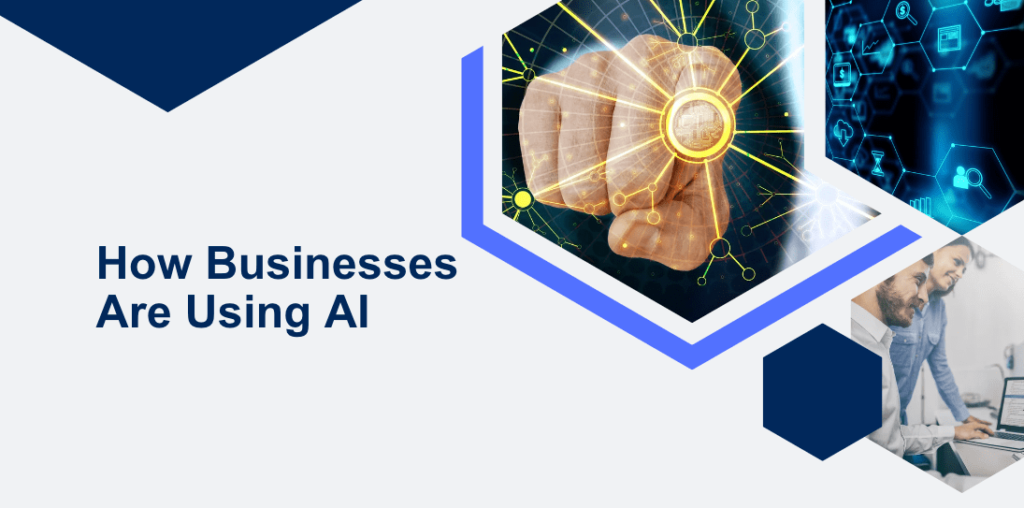
A New Era of Intelligent Operations
In today’s digitally driven economy, artificial intelligence (AI) is no longer a concept relegated to research labs or sci-fi fantasies. It is an operational necessity. Businesses around the world are embedding AI into their core strategies to streamline operations, optimize performance, and deliver unmatched value to customers.
As we advance into 2025, AI technologies—from machine learning to natural language processing—are redefining what efficiency looks like. Businesses embracing AI are witnessing transformational gains: faster decision-making, reduced overhead, improved customer experiences, and accelerated innovation. This comprehensive guide explores how AI is revolutionizing business efficiency across sectors, providing original analysis and practical insights for leaders ready to embrace this digital paradigm shift.
Understanding AI’s Business Impact
What Is Business Efficiency?
Business efficiency refers to how effectively a company utilizes its resources—time, labor, capital, and technology—to produce desired outcomes. True efficiency isn’t just about doing things faster; it’s about doing the right things at the right time with minimal waste.
The AI Advantage
AI enhances efficiency by:
- Automating repetitive tasks that traditionally consume hours of human labor.
- Enhancing decision-making through data-driven insights.
- Predicting trends and behaviors to allow for proactive, not reactive, strategies.
- Personalizing experiences at scale.
AI is unique because it doesn’t just support human efforts—it augments and often outperforms them in key business functions.
AI Applications Across Business Functions
1. Operations Management
AI optimizes operations through:
- Intelligent automation (e.g., robotic process automation)
- Smart inventory management
- Real-time performance analytics
For instance, predictive analytics enables manufacturers to foresee equipment failures and schedule maintenance proactively, saving both time and money.
2. Marketing and Sales
Modern marketing departments rely heavily on AI to:
- Analyze consumer behavior
- Personalize campaigns
- Automate email and social outreach
Sales teams use AI-driven CRM platforms that score leads based on interaction history and likelihood to convert, improving conversion rates and reducing cost-per-acquisition.
3. Human Resources
In HR, AI facilitates:
- Resume screening and candidate matching
- Employee sentiment analysis
- Learning and development recommendations
By automating candidate pre-screening, HR teams can reduce hiring time by up to 70%.
4. Customer Service
Chatbots and virtual assistants are AI’s most visible use case. They:
- Provide instant 24/7 support
- Handle common queries without human intervention
- Learn from interactions to improve over time
These tools improve customer satisfaction while reducing operational costs.
5. Finance and Accounting
AI reduces financial errors through:
- Automated bookkeeping
- Fraud detection
- Real-time forecasting
AI-powered expense management tools scan receipts, flag anomalies, and ensure compliance—far faster than traditional systems.
6. Supply Chain and Logistics
With AI, companies can:
- Forecast demand with high accuracy
- Optimize delivery routes
- Monitor supplier performance
This means faster delivery times, lower costs, and improved customer satisfaction.
Strategic Implementation of AI
Steps for AI Adoption
- Assess Readiness – Evaluate current processes, data infrastructure, and employee skill levels.
- Set Clear Goals – Define success metrics for efficiency, cost savings, or customer satisfaction.
- Start Small – Pilot projects in one department to gather insights.
- Invest in Training – Upskill employees to work alongside AI tools.
- Scale Responsibly – Expand AI integration based on measurable outcomes.
Common Pitfalls
- Lack of a clear strategy
- Poor-quality data
- Underestimating cultural resistance
- Neglecting AI ethics and transparency
To avoid these, ensure AI aligns with business goals and involves cross-functional collaboration.
AI and the Future of Work
Redefining Roles
AI isn’t replacing jobs—it’s reshaping them. Employees are moving from repetitive task execution to roles requiring:
- Strategic thinking
- Creativity
- Emotional intelligence
For example, a financial analyst once tasked with compiling reports now focuses on interpreting insights and advising decision-makers.
New Job Opportunities
AI is creating demand for roles like:
- AI ethicists
- Prompt engineers
- Data trainers
- AI integration specialists
Upskilling is essential for employees to thrive in an AI-enabled workplace.
Overcoming Challenges in AI Adoption
Ethical and Legal Concerns
Transparency in how AI makes decisions is crucial, especially in regulated industries like healthcare and finance. Ethical AI frameworks help ensure fairness and accountability.
Data Privacy and Security
AI thrives on data, but improper data handling can lead to breaches and legal trouble. Implementing strict data governance protocols is essential.
Organizational Resistance
Change management is key. Leaders must:
- Communicate benefits clearly
- Involve teams early
- Celebrate early wins to build momentum
Measuring ROI and Business Outcomes
Key performance indicators (KPIs) for AI efficiency include:
- Cost savings
- Time reduction
- Accuracy improvements
- Customer satisfaction metrics
- Revenue growth from AI-driven initiatives
For example, an e-commerce firm using AI to personalize product recommendations might see a 30% boost in average order value.
Industry-Specific Applications
Healthcare
- Predictive diagnostics
- Robotic surgery
- Administrative automation
Manufacturing
- Predictive maintenance
- Quality assurance through computer vision
Retail
- Dynamic pricing
- Personalized shopping experiences
Legal and Compliance
- AI tools review contracts and detect risks
- Monitor compliance violations in real-time
Each industry tailors AI’s capabilities to their unique challenges and regulatory landscapes.
The Road Ahead
AI is evolving fast, with emerging trends like:
- Generative AI that creates content, code, and more
- AI + IoT (AIoT) for smarter connected devices
- Explainable AI (XAI) for transparency in decision-making
- Autonomous business processes with minimal human intervention
Companies that embed AI into their DNA now will be better positioned to thrive in tomorrow’s markets.
Top 5 Questions and Answers
1. How does AI improve decision-making in businesses?
Answer: AI analyzes large data sets, identifies trends, and generates predictive models, allowing for faster and more accurate decisions that drive efficiency and competitive advantage.
2. Can small businesses benefit from AI?
Answer: Absolutely. Affordable AI tools like chatbots, CRM automation, and analytics dashboards are accessible to small businesses, enabling them to compete with larger firms.
3. What are the main risks of using AI?
Answer: Risks include data misuse, algorithm bias, job displacement fears, and ethical dilemmas. Addressing these through robust policies is key.
4. How does AI affect employees’ roles?
Answer: AI automates routine tasks, freeing employees to engage in higher-value work. This often leads to greater job satisfaction and new career opportunities.
5. What industries are leading in AI adoption?
Answer: Manufacturing, healthcare, retail, and finance are at the forefront. Each uses AI to solve sector-specific efficiency challenges, from predictive diagnostics to pers
The AI-Driven Future Is Now
AI is not a passing trend—it’s the future of business efficiency. Organizations that harness its power will be more agile, customer-centric, and innovative. The key is to act now: start small, scale wisely, and never lose sight of the human element.
Businesses that merge technological foresight with ethical responsibility will not just survive in this AI era—they will lead it.



